Come explore the beauty of Cabrera Island off the Coast of Mallorca: A paradise for snorkelers with unspoiled beaches. The archipelago is part of the biggest Spanish maritime reserve and there are only a limited amount of visitors allowed each day – don’t miss out!
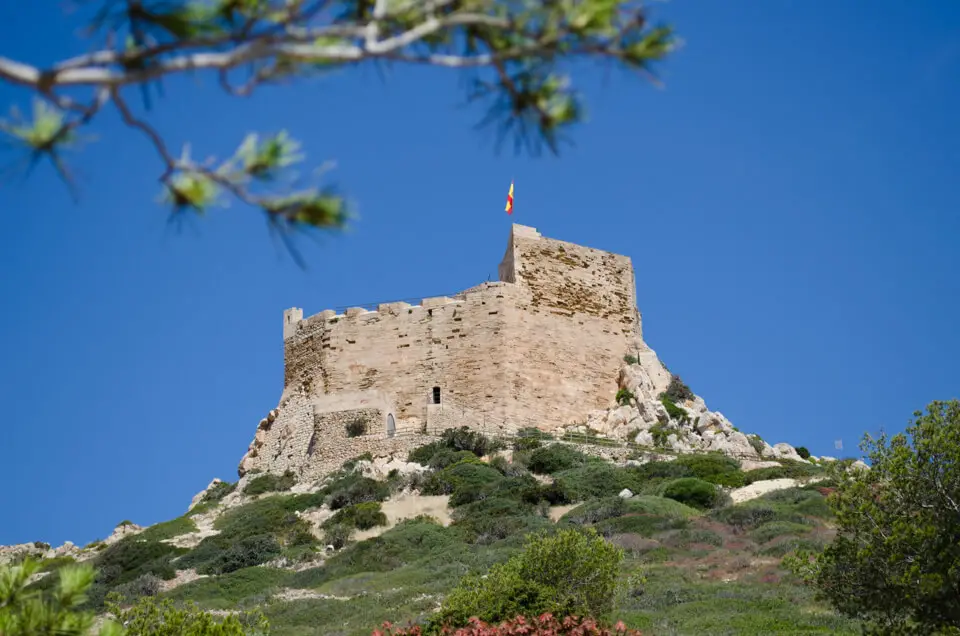
Transparency note: Some links in this post may lead to external booking opportunities. If a purchase is made, we receive a small commission. The price does not change for you.
What would Mallorca look like if tourism hadn’t taken off? An intriguing question that can be easily answered with a short boat ride to Cabrera Island. Inquisitive lizards, friendly fish, a blue cave, and an ancient castle are just some of the things that await you. The trip to Cabrera is not necessarily cost-effective, but it is certainly worth every penny. Come and explore the island with us!
Reserve your spot on the boat:
Departure from Colonia de Sant Jordi
Natural Reserve of Cabrera
The Cabrera Archipelago is composed of 18 islands and is part of Mallorca both geographically and administratively. Ten thousand years ago, the sea level was so low that a sandbar linked the two islands. Various animals took advantage of this to move to the outlying island.
When we talk about Cabrera today, we are referring to the main island, which is the only one in the archipelago can be reached by tourist boats. The area around it and the sea is widely protected. In February 2019 it has become the largest maritime nature reserve in Spain.
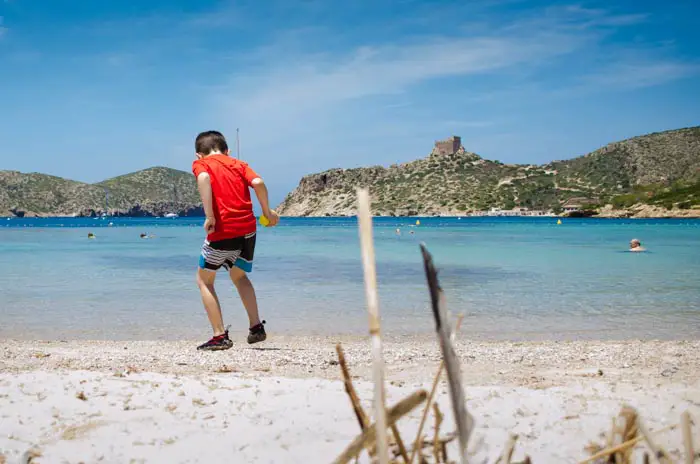
Access to the island of Cabrera is heavily regulated. Only a limited number of visitors are allowed to take trips to Cabrera with certified providers each day. If you possess your own boat, you can only approach the island with special permission from the island government and only dock at the buoys to protect the Neptune seagrass.
Some rangers are stationed on the island all year round. They make sure that no one enters the Cabrera Island without authorization. Moreover, they provide visitors with information on the rules and lead tours on routes that we are not allowed on without them.
Activities and Sights on Cabrera Island
Cabrera, translating to “goat” in English, has long been a strategically significant stopover in the Mediterranean. The Romans brought the name. They released goats on the island in order to have provisions for their merchant ships halfway to the western part of their empire, without having to carry it all the way. The goats had no natural enemies on the island, so the population of the animals multiplied without restraint. And Cabrera Island got its name. However, goats are nowhere to be seen today. They were banished after they had eaten all the plants and almost destroyed the unique ecosystem.
The Castle of Cabrera Island
The castle on the island is a prominent sight. It was built at the end of the 13th century and subsequently destroyed and rebuilt multiple times. As part of the defense system against the pirates, the castle was hotly contested. The corsairs often used the outlying island as a staging point to plan their attacks on Mallorcan ports and to hide their spoils. That’s why people frequently refer to the island as the Pirate Island when talking about Cabrera.
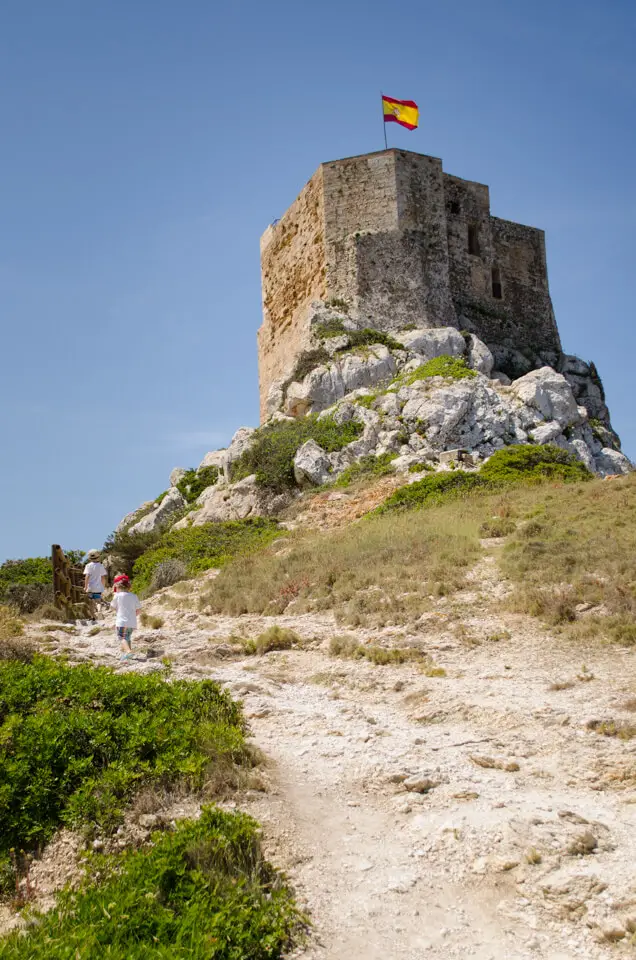
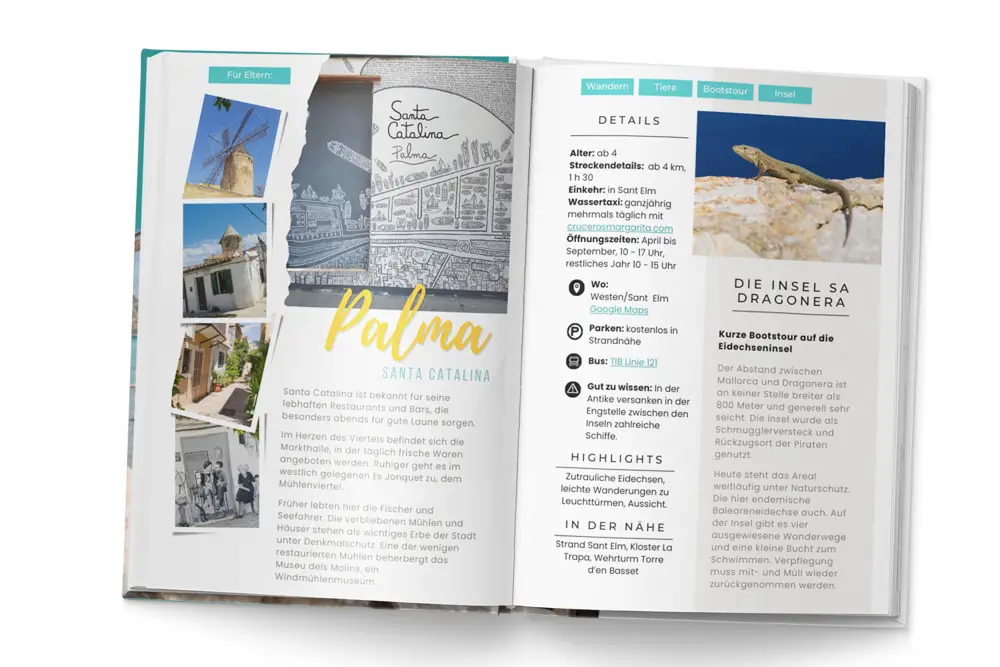
Du liebst diese Tipps?
Entdecke alle kinderfreundlichen Aktivitäten, Strände und exklusive Rabatte in meinem Mallorca-Guide.
The sentry at the castle was the highest paid in the Kingdom of Mallorca, but also the one who had the least amount of soldiers made it back home. After the pirate era, smugglers used the abandoned island to hide contraband. It is rumored that even dictator Franco used the island to hide antibiotics.
Cabrera’s Seamen’s Cemetery and a Legend
Just below the castle lies the sailor’s cemetery, where mainly French soldiers are buried. There are two graves that are worth mentioning. One is of a Mallorcan, either a farmer who had a heart attack or a fisherman who drowned in a storm while out at sea, depending on who tells the story. The grave remained without a gravestone, the deceased was called “En Lluent”.
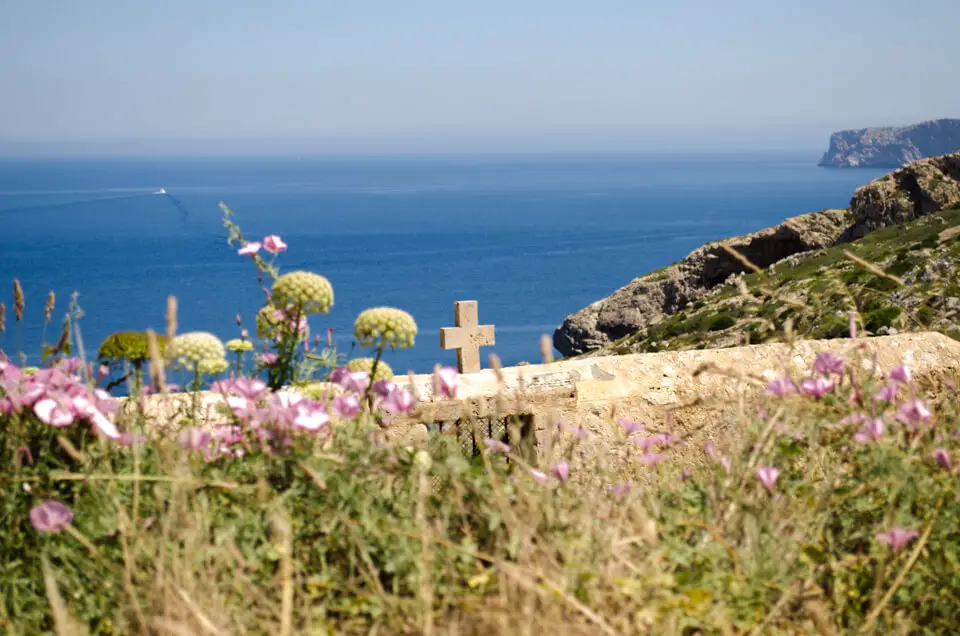
The second grave was of a German soldier during World War II. Johannes Bochler, or Böckler, a 20-year-old soldier, drowned after their plane crashed due to engine failure in April 1944. Only the pilot survived. Böckler’s body was discovered in the sea near Cabrera and buried in the cemetery there.
The legend goes that the ghost of the German pilot would roam the island every night, wishing to return home and be buried with his loved ones. Decades later, the Commission of German War Victims exhumed the body and brought it back to Germany. However, this did not end the haunting. The ghost kept roaming the island. More so, there appeared another one on the German cemetery where the body was buried. It is said that an old fisherman can be heard moaning in barely comprehensible language, wanting to return to his grave by the blue sea.
Hiking on Cabrera
The island of Cabrera is not the perfect place for hikes, but there are some trails to explore. Make sure to stay within your and your children’s physical capabilities when planning day trips, and be sure to return to the boat at the designated time. Some hiking paths may require a ranger’s guidance.
Like hiking? Find more trails here.
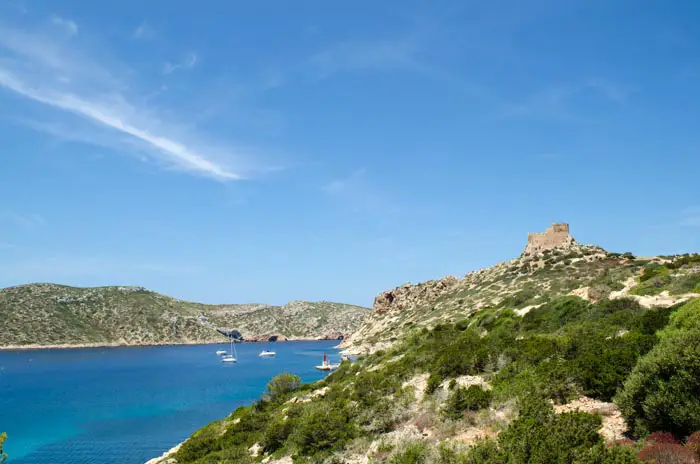
Tours for hiking on Cabrera Island:
- The distance from the harbor to the lighthouse N’Ensiola on the southwestern peninsula is 5.5 kilometers, with an estimated round trip time of five hours.
- The hike to Na Picamosques is the same distance and goes west to the island’s highest peak. This hike must be reserved at the information office at the harbor and is guided.
- The hike to Sierra del Canal de Ses Figueres is 8.5 kilometers and takes approximately 2.5 hours. This hike is guided by rangers.
- The tour to Ses Sitges takes you behind the castle to the unexplored part of the island, where you can find secret coves and remnants of civilization such as charcoal huts and lime kilns. This hike must also be reserved at the information office.
The Beaches of Cabrera: Bathing & Snorkeling
Make sure to bring swimwear and goggles, along with food and water, in your backpack. Even though there is more to Cabrera than beaches, the small bays here will probably be your main destination, especially if you have younger kids.
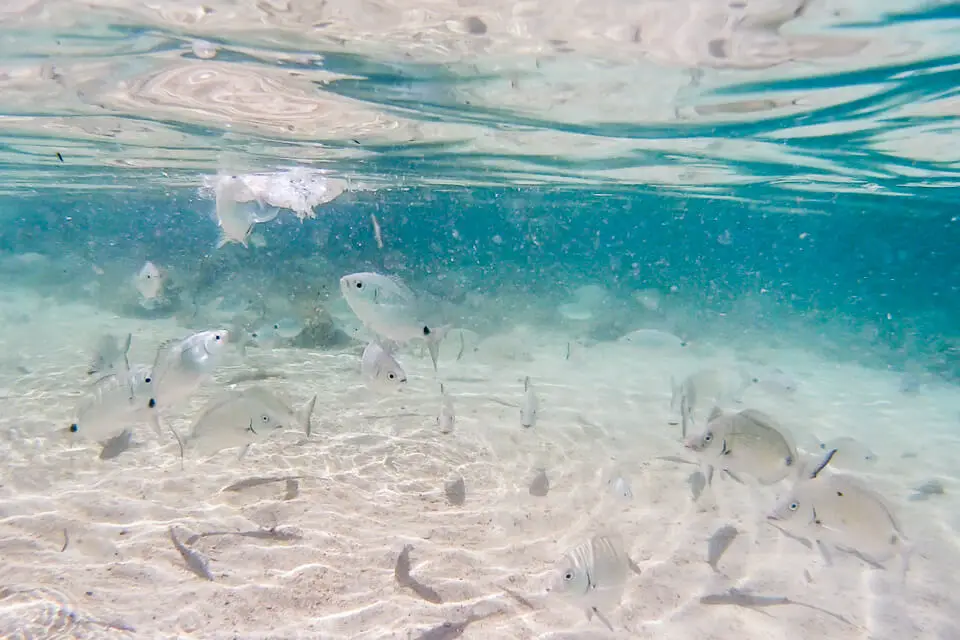
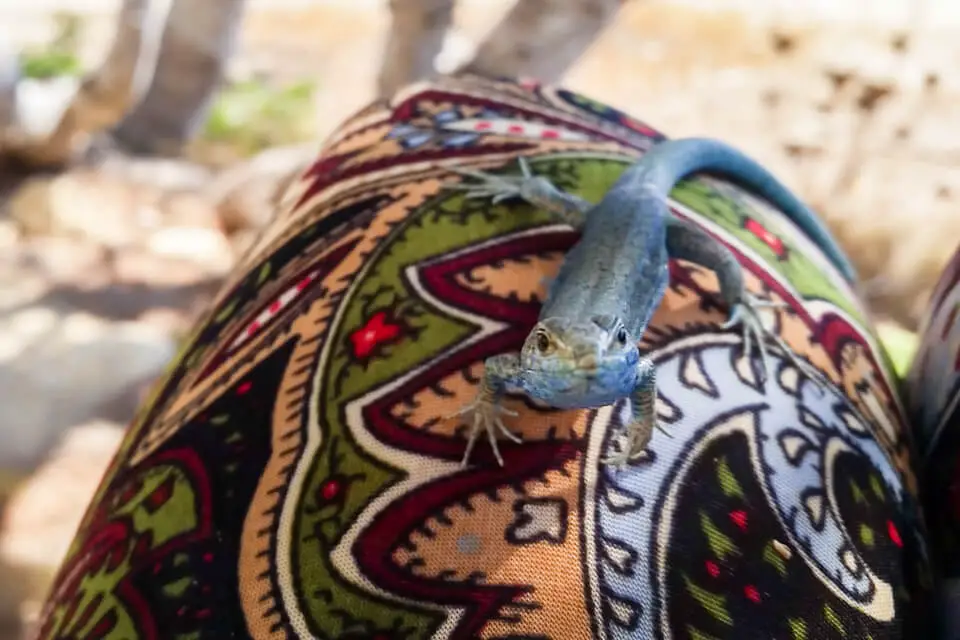
The beaches of the Cabrera island are sandy with stones and pebbles mixed in. If you have sensitive children, you should bring swim shoes. The main beaches are Sa Platgeta and s’Espalmador, and there is a smaller, rocky beach near the old farmhouse.
No matter where you enter the water, be ready to not be able to remove your children from it. Fish swim around you fearlessly, and hermit crabs bask in the sun on the rocks. It is said that you can even spot dolphins and turtles, although we haven’t been that fortunate yet. However, it is likely to see octopuses and moray eels.
And there are also fearless animals on land. The native Balearic lizards are so bold that they even climb on legs and into pockets. Don’t accidentally squish them!
The Blue Cave
Regardless of which excursion to Cabrera you book, they all make a swimming stop in the Blue Cave on the way back. You should definitely take advantage of this, so it is best to keep your swimwear on and have swimming aids for the kids to make the most of the time in the water.
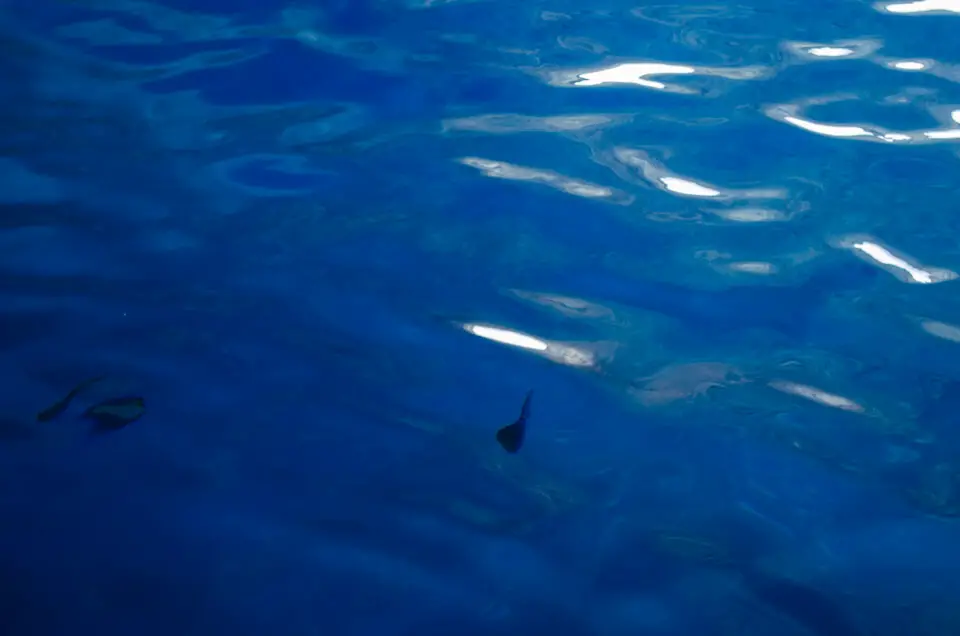
Why is the cave so special? Well, it’s blue. But not like all the other bays. It has a dark, almost unnatural shade of blue. This is due to the particular way the cave is oriented and the way the sunlight comes in.
The Museum Es Cellar
Since 1996, the former wine cellar has been home to an ethnological museum. It belonged, like the houses on the beach, to the Feliu family, which was expropriated by the state at the beginning of the 20th century. The museum is three kilometers from the harbor. Right behind it is the botanical garden, where native plants of the island are exhibited.
One part of the exhibition displays archaeological discoveries from the excavations, which uncovered a Byzantine necropolis. But there are also artifacts from the sea from ships sunk off of Cabrera that date back to Roman times. Additionally, the tradition of fishing is explained, for which salting plants were built on Cabrera to make the caught fish last.
The French Cross
The stone cross is a monument meant to commemorate the French soldiers who died on Cabrera. After the defeat of the Napoleonic army in Bailén, 12,000 captive soldiers were abandoned here during the Spanish War of Independence at the beginning of the 19th century, with no lodgings or supplies.
The soldiers in their time on the island chopped down all trees and nearly eliminated every animal. There was one source of freshwater that secured their survival. There were obviously also cases of cannibalism. On one of the hikes, you pass by the remnants of an improvised camp made by the soldiers. Only a third of the prisoners made it out alive – scarred and undernourished.
The Cabrera Island Visitor Center in Colonia de Sant Jordi
The Cabrera Visitors Center is located in the port of Colonia Sant Jordi and not on the archipelago. It contains an aquarium, which simulates a dive from Mallorca to Cabrera.
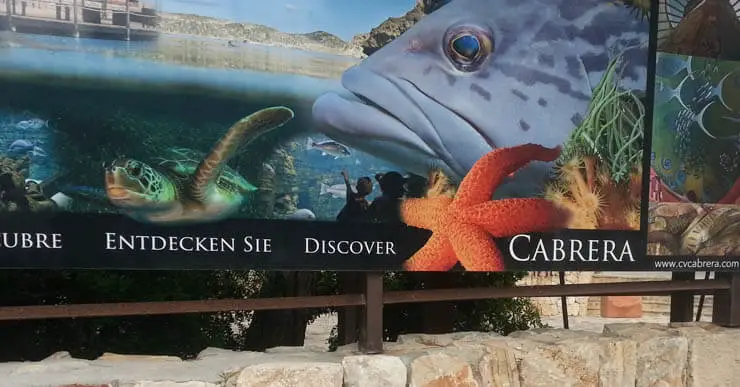
Visiting is a great way to prepare, to recap a canceled trip due to bad weather, or if the boat tour and associated full-day trip aren’t for you.
Staying in Cabrera: The Hostal Rosa dels Vents
There is so much to do on Cabrera that one day is not enough? There is a solution for that too. Next to the beach Sa Platgeta, there is a simple hostel in the old farmhouse building with a total of four rooms for a maximum of 12 people, who share a bathroom and a common room with a kitchen.
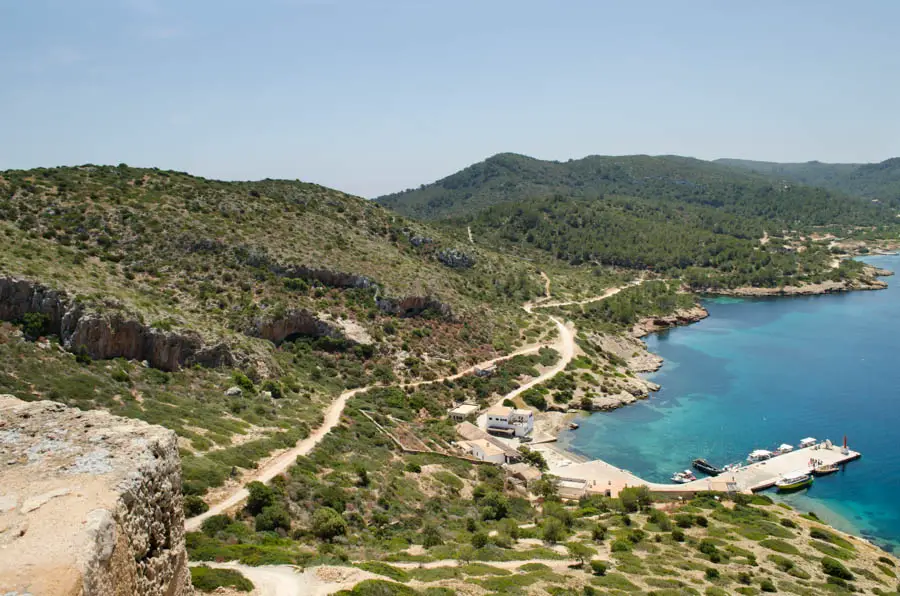
The stay there is limited to two nights and must be reserved in advance through a somewhat complicated and Spanish website through the Balearic Ministry for Protection of Nature. Each room costs roughly 60 euros per night.
Tickets & Reservations for Cabrera Island
If you are still reading here, I have apparently made you sufficiently interested in visiting Cabrera. The boats to the island depart from Colonia de Sant Jordi daily between April and October. It is absolutely necessary to book the tour in advance!
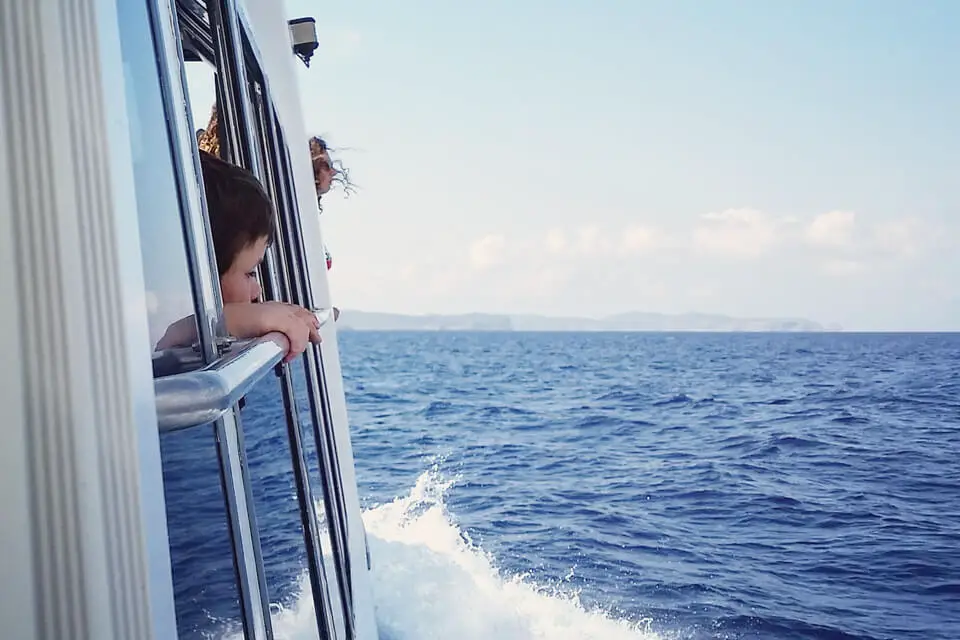
New, there are also boat trips to Cabrera Island that leave from Palma de Mallorca. These excursions also take you to the Blue Cave and you have free time on the island. You can book the tour from Palma here.
TLDR
Details: Day trip 6 hours, from April to October, weather dependent.
Tour operator: The excursions can be booked from Colonia de Sant Jordi.
Parking: In Colonia de Sant Jordi.
Strollers: Conditionally. In some spots, a stroller isn’t the most practical thing. But for very small children, it’s worth bringing. Check with the operators in advance.
Important: Trash must be taken back to Mallorca. Official paths must not be abandoned.
Bring: Sun protection, sunscreen, umbrella, swimwear, goggles, water, snacks
Accommodation: For the adventurers, there’s the option to stay at the Rosa del Vent hostel. The stay is limited to two nights.
More info: To kick off or wrap up your visit, visit the visitor center/aquarium of the national park in Colonia Sant Jordi, which is located close to the boat dock.
Read More
Want more recommendations like this? Check out more than 100 day trips and excursions on Mallorca.
Planning your holiday on Mallorca:
Book your Flight here
Great Rental Car Offers